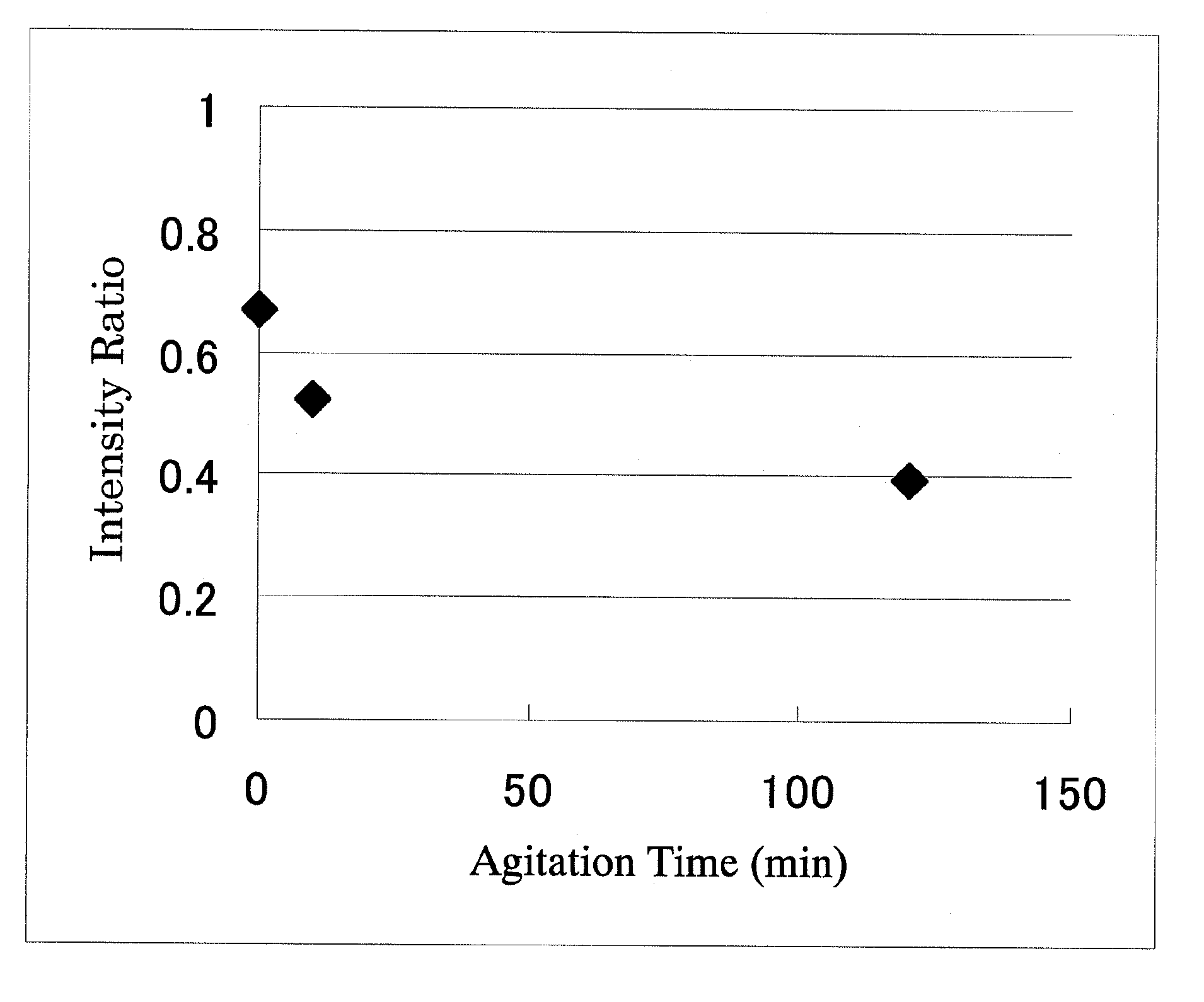Composite semipermeable membrane and method for producing the same
a semi-permeable membrane and semi-permeable technology, applied in the direction of membranes, filtration separation, separation processes, etc., can solve the problems of increasing water treatment costs, increasing energy consumption, and excessive concentration of ions on one side of the membrane, so as to achieve excellent selective separation performance, and economic superior
- Summary
- Abstract
- Description
- Claims
- Application Information
AI Technical Summary
Benefits of technology
Problems solved by technology
Method used
Image
Examples
example 1
[0057]A polyester non-woven fabric with dimensions of 21 cm×15 cm (air permeability: 0.5 to 1 cc / cm2 / sec) was prepared, and a 15.3 wt % dimethylformamide (DMF) solution of polysulfone was cast onto the non-woven fabric to a thickness of 200 μm at room temperature (25° C.) and immediately immersed in pure water and allowed to stand for 5 minutes to prepare a microporous support membrane.
[0058]2 mL of a coating liquid A prepared by mixing 3.0 parts by weight of sodium p-styrenesulfonate, 1.5 parts by weight of 3-methyl-1-(3-trimethoxysilylpropyl)imidazolium chloride, 0.24 part by weight of 2,2-dimethoxy-1,2-diphenylethane-1-one, and 95.26 parts by weight of a 65% aqueous isopropyl alcohol solution was placed on the microporous support membrane, from the surface of which droplets had been removed by nitrogen blowing. Then, the surface of the microporous support membrane was covered with a polyester film (Lumirror® manufactured by Toray Industries, Inc.) and allowed to stand for 1 minut...
example 2
[0061]A composite semipermeable membrane was produced in the same manner as in Example 1 except that 3-ethyl-1-(3-trimethoxysilylpropyl)imidazolium chloride is used instead of 3-methyl-1-(3-trimethoxysilylpropyl)imidazolium chloride. The thus obtained composite semipermeable membrane was evaluated in the same manner as in Example 1, and as a result, performance results shown in Table 1 were obtained.
example 3
[0062]A composite semipermeable membrane was produced in the same manner as in Example 1 except that 3-butyl-1-(3-trimethoxysilylpropyl)imidazolium chloride is used instead of 3-methyl-1-(3-trimethoxysilylpropyl)imidazolium chloride. The thus obtained composite semipermeable membrane was evaluated in the same manner as in Example 1, and as a result, performance results shown in Table 1 were obtained.
PUM
| Property | Measurement | Unit |
|---|---|---|
| size | aaaaa | aaaaa |
| size | aaaaa | aaaaa |
| thickness | aaaaa | aaaaa |
Abstract
Description
Claims
Application Information
 Login to View More
Login to View More - R&D
- Intellectual Property
- Life Sciences
- Materials
- Tech Scout
- Unparalleled Data Quality
- Higher Quality Content
- 60% Fewer Hallucinations
Browse by: Latest US Patents, China's latest patents, Technical Efficacy Thesaurus, Application Domain, Technology Topic, Popular Technical Reports.
© 2025 PatSnap. All rights reserved.Legal|Privacy policy|Modern Slavery Act Transparency Statement|Sitemap|About US| Contact US: help@patsnap.com



